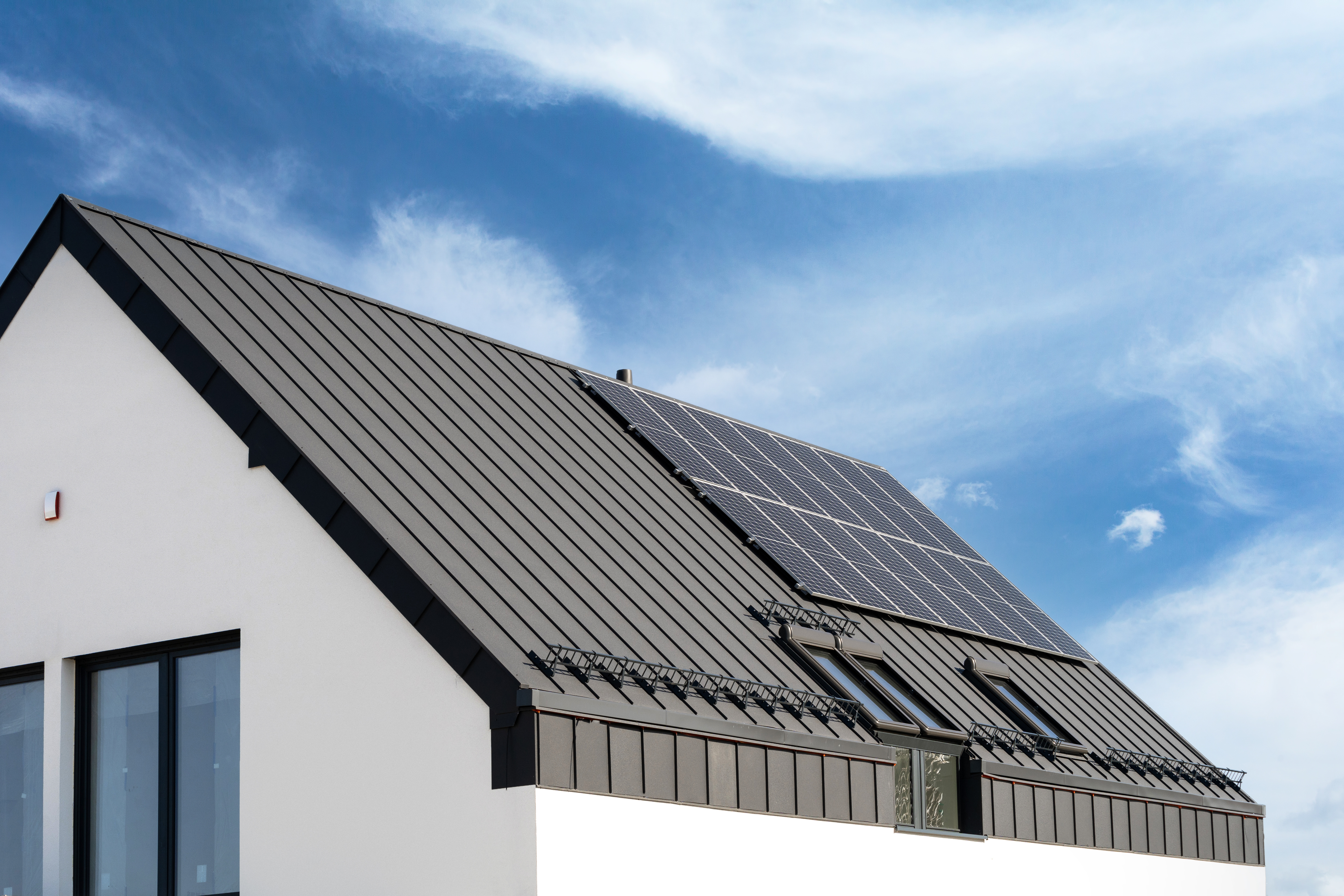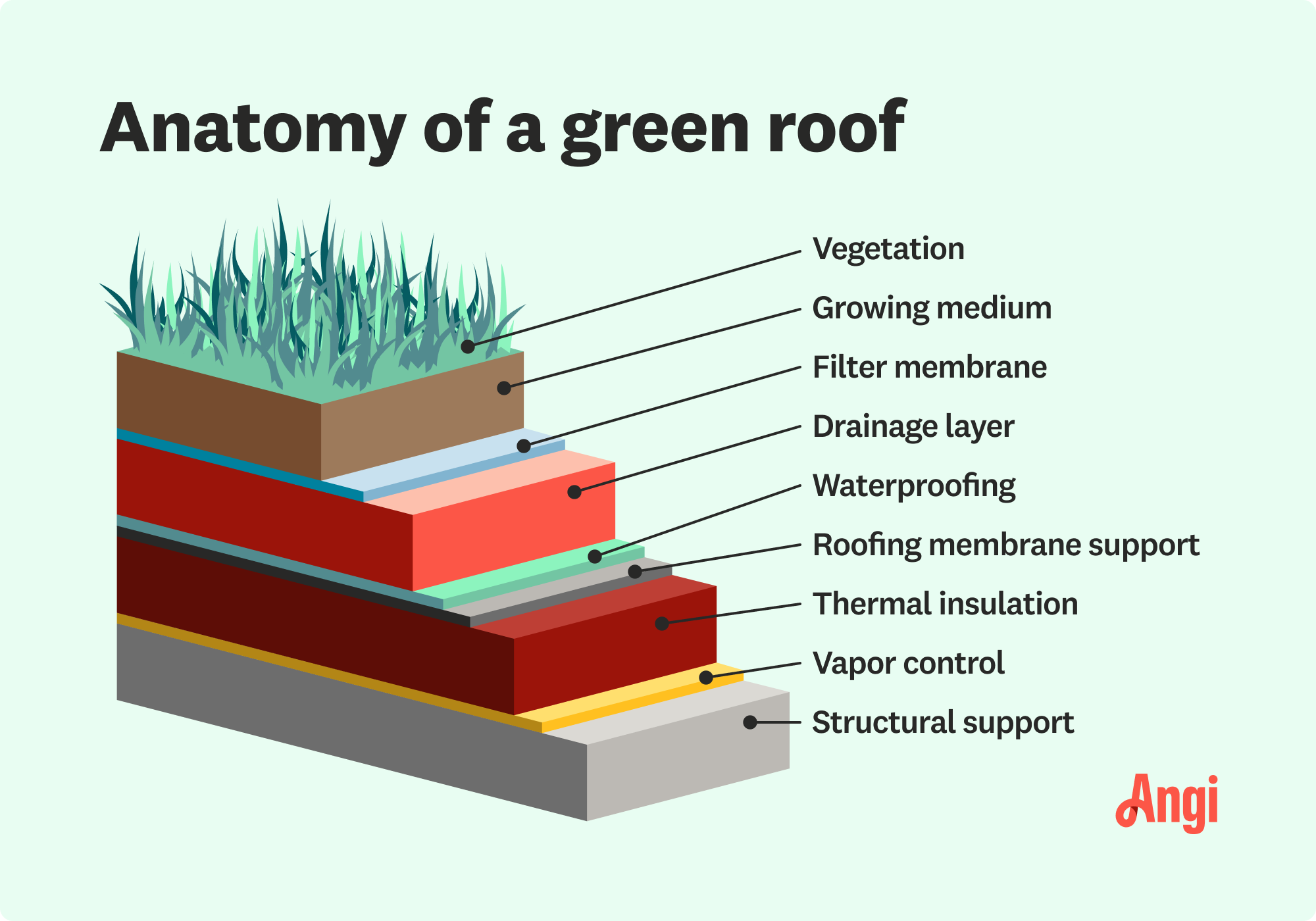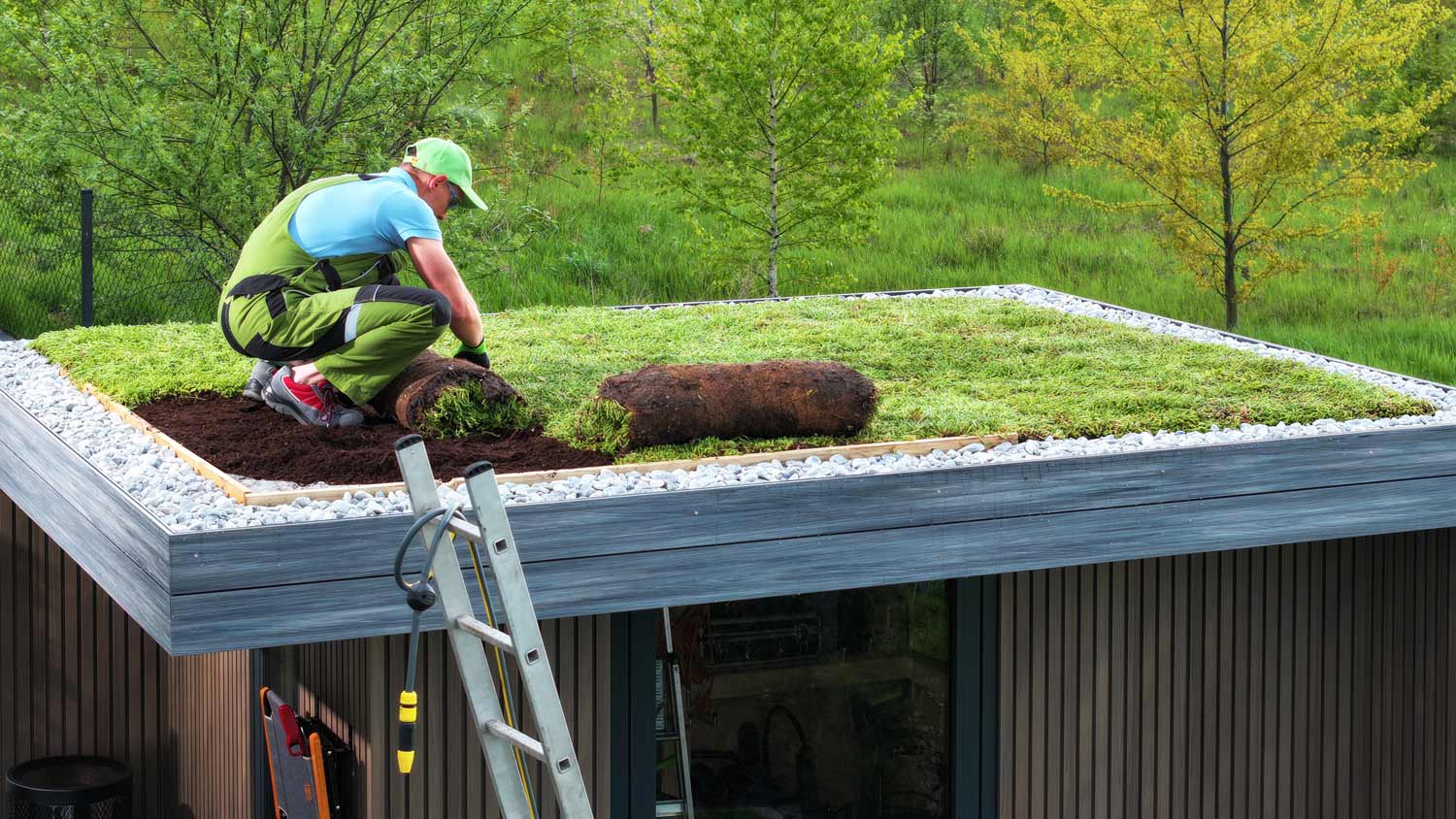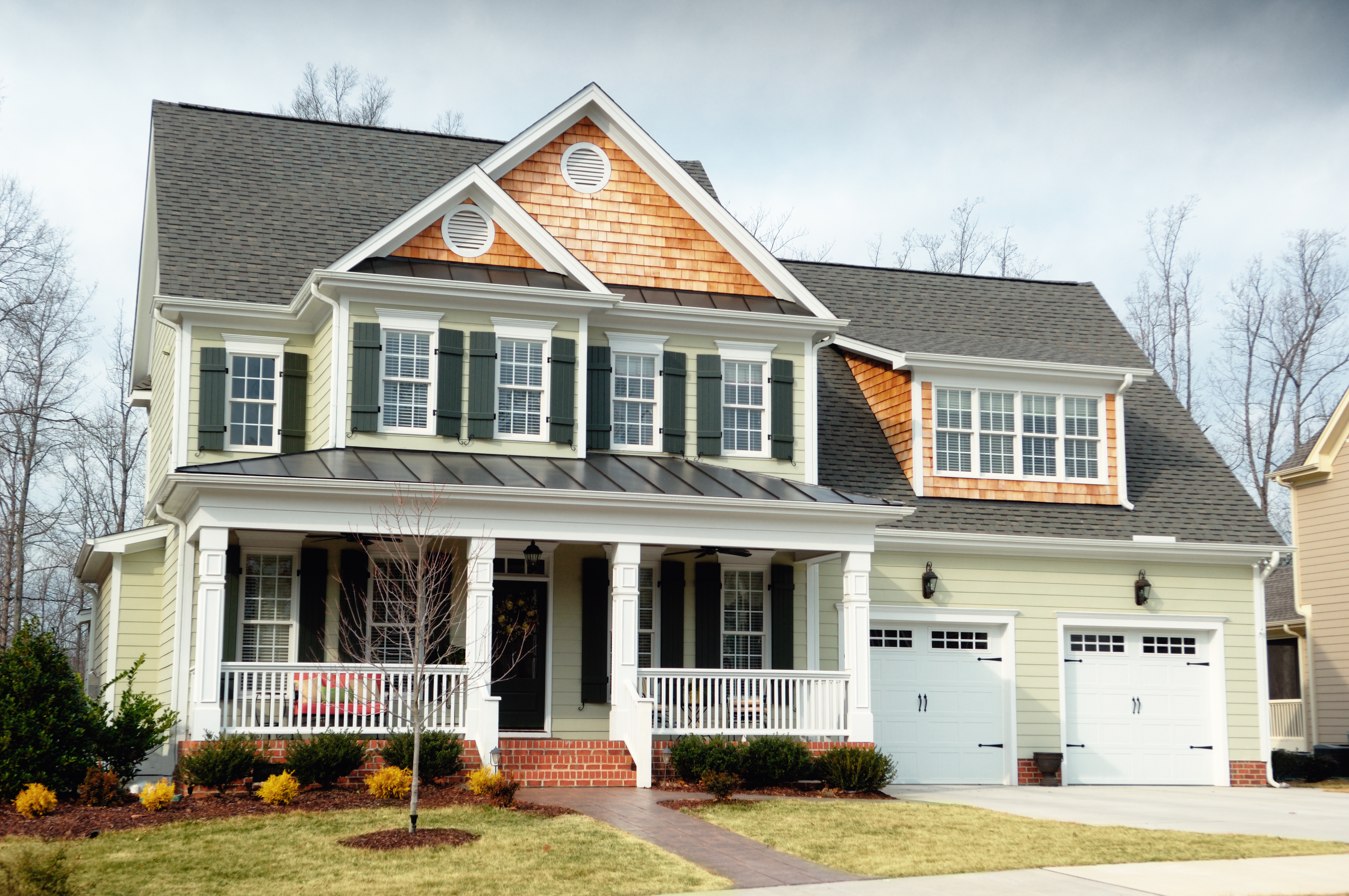
A metal roof can defend your home against Ohio’s varying weather conditions. Learn how much a metal roof costs in Columbus, OH.
Add some green to save some green


Green roofs help to reduce greenhouse gas emissions and manage stormwater run-off.
Green roofing can help lower your home’s energy bills.
Installing a green roof costs between $10 and $30 per square foot.
What is a green roof? A green roof is a layer of plants growing on top of a building. It can transform your home, improving energy efficiency and creating a green oasis. Green roofs offer more than environmental benefits, though. They can also help to extend the life of your roof.
A green roof is a roof that weaves vegetation into its architecture. Sometimes known as a roof garden, an eco-roof, or a living roof, a green roof contains a thin layer of vegetation.
Green roofs are often installed over residential or commercial roof types. They may be installed on low-slope or steep-slope rooftops, although they work best on flat roofs.
The elements of a green roof sit on the roof structure itself, rather than replacing traditional roofing materials.

As with anything, there are some pros and cons of green roofs. Here’s what to know about the benefits and drawbacks of a living roof.
Many green roof benefits focus on the environment. When you put plants on top of your home, you help to reduce greenhouse gas emissions, as the plants absorb carbon dioxide from the air.
Plants also help to reduce the surface temperature of your roof, which can help to minimize heat islands. According to the Environmental Protection Agency (EPA), green roofs can help lower ambient temperatures by up to five degrees Fahrenheit.
Green roofs also help improve stormwater management because they absorb rainwater, slowing down the rate at it which it flows off of your roof. A green roofing system can also help to send rainfall back into the atmosphere, thanks to evaporation.
Beyond the environment, green roofs provide economic perks. Since they rest on top of your home's roofing structure, they help protect it from wear and tear and can extend the life of your roof. As they help to cool your roof, they can also lead to lower energy bills, particularly during the heat of summer.
The most notable drawbacks of green roofs are that they tend to cost more than many traditional roofing types and increase the weight load on your roofing structure. Their price increase is due not only to the upfront cost of installing the waterproof membrane and vegetation, but also the ongoing maintenance cost of keeping the plants alive and well.
You need to water the vegetation on a green roof, so that means you run the risk of water damage and leaks from the extra moisture.

Three types of green roofs exist:
Extensive
Semi-intensive
Intensive
An extensive green roof is the most lightweight and compact option. Extensive green roofs usually feature succulent plants that don't require much water and are relatively low-maintenance.
Semi-intensive and intensive green roofs require a larger amount of growing medium and a more extensive support system. With certain types of intensive green roofs, you may even find trees growing on a roof. However, these types of green roofs are better suited for larger, commercial buildings.
A green roof isn't the same as a cool roof, although both types help to reduce energy bills. Cool roofs are often painted a reflective color, such as white. The light color makes them less likely to absorb heat. However, unlike a green roof, a cool roof doesn't help to manage stormwater run-off.
Green roofs require maintenance beyond that of a standard roof. You'll want to hire a local roofing company to inspect them annually.
Along with regular inspections to ensure everything is structurally sound and there are no leaks, you'll also need to care for the plants on the roof.
With succulents and other low-maintenance plants, you may only need to check the roof once or twice a year to ensure the plants are okay. With all other types of vegetation, regular watering, pruning, and other maintenance tasks are necessary. In some cases, you may need to have someone check on the plants once a week.
From average costs to expert advice, get all the answers you need to get your job done.

A metal roof can defend your home against Ohio’s varying weather conditions. Learn how much a metal roof costs in Columbus, OH.

Dealing with a visibly damaged roof or leak? Learn about roof repair costs in Columbus to see how much you’ll need to budget for a permanent solution.

Learn about roof replacement costs in Columbus and what factors are at play to budget accurately and make sure you’re getting a fair price.

Painting a metal roof helps it look great and last for decades. Use this guide to learn how to paint a metal roof, whether you DIY the job or hire a pro.

A leaky roof is less than ideal. Learn how to patch a roof while you wait for repairs from the pros to prevent further damage to your home.

Even if you were meticulous when painting your house, it's possible that paint got onto your roof. Read this guide to learn how to get paint off shingles.